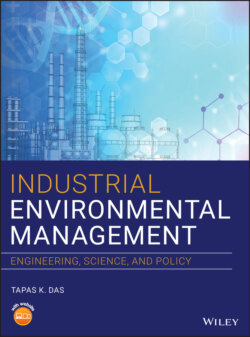Читать книгу Industrial Environmental Management - Tapas K. Das - Страница 55
Problems
Оглавление1 1.1 State why industrial environmental management is a critically important part of human well‐being and sustainable development?
2 1.2 Define waste as pollution.
3 1.3 Explain the difference between pollution prevention and minimization of waste.
4 1.4 What is the key point of the Pollution Prevention Act of 1990?
5 1.5 Define sustainability. Explain why the concept of “Zero Discharge and Zero Waste” in manufacturing are the keys to sustainability.
6 1.6 What are the basic environmental challenges that must be met to meet world demands for (a) clean air, (b) clean water, and (c) arable land?
7 1.7 Using Zero Waste, Zero Defect and Zero Effect, and Zero Discharge, (a) what conversion technologies need to be developed? [Hint: Check out Figures 1.7 and 1.8.] (b) What are the investment management points of view when manipulating the profit margins? (c) What are the constraints and challenges that must be met to meet regulatory requirements?
8 1.8 Fifteen fields of environmental management are introduced in this chapter. Answer the following: (a) Choose seven fields that work closely together and explain the commonality that the eight remaining fields have in common. (b) How is consensus methodology achieved between groups? (c) Which field of environmental management requires global support for human health?
9 1.9 Does ISO support industrial environmental management system, and if it does, how?
10 1.10 What are the key elements of an environmentally conscious manufacturing strategy?
11 1.11 As chemical process and product design engineers, as well as construction, industrial, and environmental engineers, how you can play a pivotal role as industries move toward the Zero Emissions or Zero Discharge paradigm.
